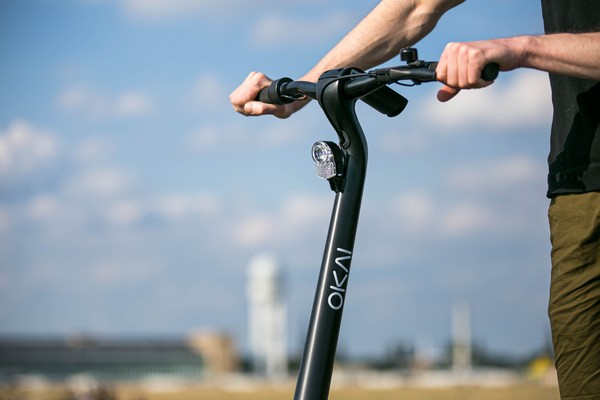Are we ready for the new era of electric scooters?

“THE SCOOTER barely missed me as it swerved around,” a Yonsei student recounted. “I didn’t hear it coming up from behind.” Electric scooters are becoming a popular mode of transportation, especially for traversing the steep slopes or narrow streets of Seoul. It’s easy to see electric scooters on campus as students use them to quickly reach their classes instead of running. However, many pedestrians grew increasingly wary of electric scooters that often made walking on the streets a risk. Despite rising concerns of safety, the South Korean government recently proposed a revision of traffic regulations that would loosen the existing safety standards of electric scooters.
Regulation changes
Electric scooters are currently categorized as “motorized bicycles” like motorcycles, so they can only be ridden on roads and aren’t allowed on sidewalks or bicycle roads. Additionally, riders need a motorized bicycle driving license, which automatically sets up an age limit of 16 and older. Although these were set in place for traffic safety, the smart mobility industry saw them as obstacles to their growth. In response, the government announced a revision to be implemented from December 10. According to this new law, scooters that weigh less than 30 kg and maximum speed lower than 25 km per hour are categorized as “personal mobility” devices. The new categorization doesn’t require a license; hence, anyone over the age of 13 can legally ride scooters. Most importantly, scooters can be used on cycling paths instead of roads.
This move seems to contrast with other countries’ efforts to regulate electric scooters. In Germany, for example, licenses and insurance based on scooter speed are mandatory, and Singapore implemented stricter laws and fines after a series of scooter accidents*. Although there were 117 scooter accidents reported in 2019, a 105% increase from last year’s, along with a six-fold increase of scooter users, South Korea seems to be loosening the laws without considering safety**.
Would it be safe?
On paper, opening up cycling paths for electric scooters seems like a better choice. Scooter drivers often rode on sidewalks under the old law, as they felt it was too dangerous to ride alongside cars. The Samsung Traffic Safety Research Institute revealed that the most common accidents happened when scooter riders crossed between pedestrian walkways and side roads, so cycling paths could prevent accidents where scooter users illegally switch between sidewalks and roads for their own safety. However, it’s uncertain whether this will actually decrease accidents. More than 70% of cycling paths in Korea are open for both pedestrians and scooter users, with a very small number of roads being reserved for personal mobility vehicles***. This won’t solve the problems of scooter drivers running into pedestrians—both with the old law, where scooter drivers were pushed onto pedestrian roads for their own safety, and with the new law, where scooters are placed upon “cycling paths” that are shared with pedestrians.
Another problem is that there aren’t enough cycling paths for safely riding scooters as transportation. More people are riding scooters in the city because they’re using them for transporting to work or school, and feel roads aren’t viable paths to reach their destinations. Unfortunately, this is still true for cycling paths; on average, there’s only 25.7 km of cycling paths per district compared to the 277 km of bicycle paths in parks and riversides for leisurely purposes****. As many cycling paths in the streets are cut off or simply non-existent in many parts of the city, it’s highly probable that many scooter riders will continue using pedestrian walkways or switching between roads. Without an established infrastructure that can support the growing need for scooter users, this problem will only continue.
The fact that anyone over 13 will be allowed to ride scooters will cause new safety concerns as well. Since licenses aren’t required, there’s a higher probability of accidents caused by minors who lack proper training for motorized vehicles. Minors also lack legal responsibility, so accidents caused by them may lead to complications in getting compensation, especially since scooters are rarely covered by insurance and it’s difficult to get car insurance for minors*****. To avoid this trouble, Lime, a popular platform for renting electric scooters, announced that they will continue their current age limit regardless of the revision******. However, this still puts the responsibility on individual companies to regulate their users without any legal restrictions.
The electric scooter industry will only grow in the future, especially with the more lenient rules. However, these only weaken safety standards while not providing solutions for legitimate issues. The careless way in which electric scooters’ safety is being handled will lead to new safety concerns or a continuation of unresolved issues that should be addressed before any revisions.
*DongA Ilbo
**IT Chosun
***Maeil Ilbo
****Seoul Economy Daily
*****Yonhap News
******DongA Ilbo

